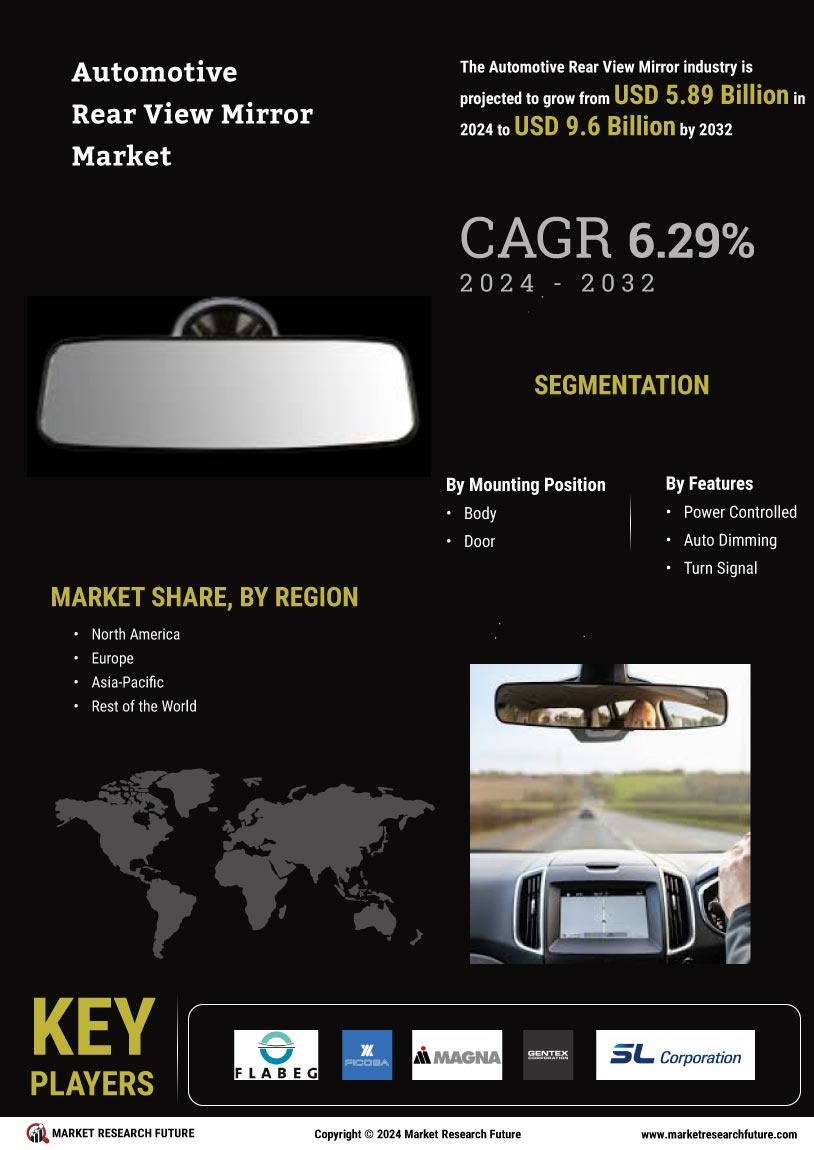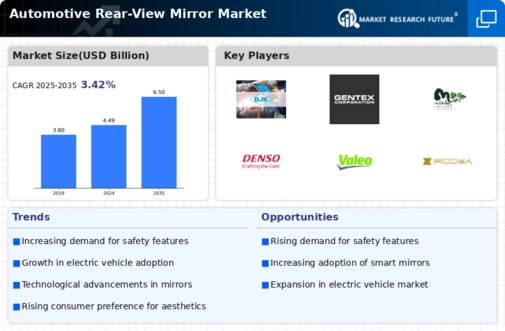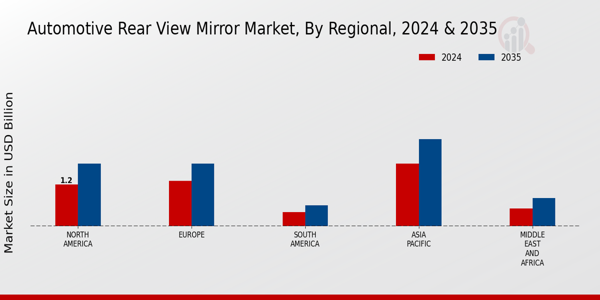Market Growth Projections
The Global Automotive Rear-View Mirror Market Industry is projected to experience substantial growth in the coming years. With a market value of 4.49 USD Billion in 2024, the industry is expected to reach 6.5 USD Billion by 2035, indicating a robust growth trajectory. This growth is underpinned by various factors, including technological advancements, increased vehicle production, and a heightened focus on safety. The anticipated compound annual growth rate of 3.42% from 2025 to 2035 suggests a steady expansion of the market, driven by both consumer demand and regulatory influences. As the automotive landscape evolves, the rear-view mirror segment is poised to play a crucial role in enhancing vehicle safety and functionality.
Rising Vehicle Production
The Global Automotive Rear-View Mirror Market Industry is closely linked to the overall growth in vehicle production. As global automotive manufacturing ramps up, the demand for rear-view mirrors is anticipated to increase correspondingly. In 2024, the market is valued at 4.49 USD Billion, driven by a surge in vehicle assembly lines across regions such as Asia-Pacific and North America. This growth is further supported by government initiatives aimed at boosting local manufacturing capabilities. As vehicle production continues to expand, the rear-view mirror segment is likely to benefit, with projections indicating a market value of 6.5 USD Billion by 2035, reflecting a compound annual growth rate of 3.42% from 2025 to 2035.
Technological Advancements
The Global Automotive Rear-View Mirror Market Industry is experiencing a surge in technological advancements, particularly with the integration of smart features such as blind-spot detection and rear-view cameras. These innovations enhance driver safety and improve overall vehicle functionality. For instance, the introduction of digital rear-view mirrors, which provide a wider field of vision and eliminate blind spots, is gaining traction. As consumers increasingly prioritize safety features, the demand for technologically advanced rear-view mirrors is expected to rise, contributing to the market's growth. This trend aligns with the projected market value of 4.49 USD Billion in 2024, indicating a robust shift towards enhanced automotive safety solutions.
Increased Focus on Vehicle Safety
The Global Automotive Rear-View Mirror Market Industry is significantly influenced by the heightened focus on vehicle safety regulations. Governments worldwide are implementing stricter safety standards, compelling manufacturers to enhance their products. For example, regulations mandating the inclusion of rear-view cameras in new vehicles have led to a surge in demand for advanced rear-view mirror systems. This regulatory environment not only drives innovation but also ensures that consumers are more aware of the safety features available in vehicles. As a result, the market is poised for growth, with a projected value of 6.5 USD Billion by 2035, reflecting the industry's commitment to safety and compliance.
Consumer Preferences for Enhanced Features
The Global Automotive Rear-View Mirror Market Industry is witnessing a shift in consumer preferences towards enhanced features that improve driving experience and safety. Modern consumers are increasingly seeking vehicles equipped with advanced rear-view mirror technologies, such as integrated navigation systems and connectivity features. This trend is particularly evident in the growing popularity of electric and hybrid vehicles, which often come with state-of-the-art rear-view mirror systems. As consumer demand for these features rises, manufacturers are compelled to innovate, thereby driving market growth. The anticipated increase in market value to 6.5 USD Billion by 2035 underscores the importance of aligning product offerings with evolving consumer expectations.
Environmental Regulations and Sustainability
The Global Automotive Rear-View Mirror Market Industry is also shaped by the increasing emphasis on environmental regulations and sustainability. Manufacturers are now focusing on producing eco-friendly rear-view mirrors that utilize sustainable materials and processes. This shift is driven by both regulatory pressures and consumer demand for greener products. For instance, the adoption of lightweight materials not only reduces the overall vehicle weight but also enhances fuel efficiency. As sustainability becomes a core aspect of automotive design, the rear-view mirror segment is likely to evolve, contributing to the market's growth. The projected CAGR of 3.42% from 2025 to 2035 reflects the industry's adaptation to these environmental considerations.











